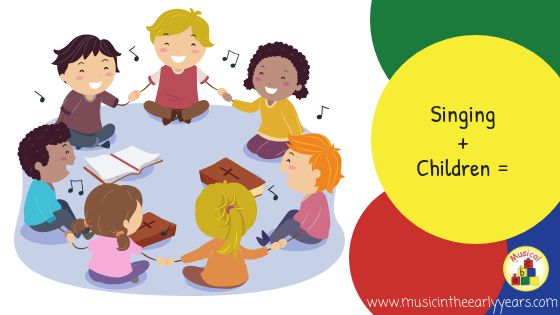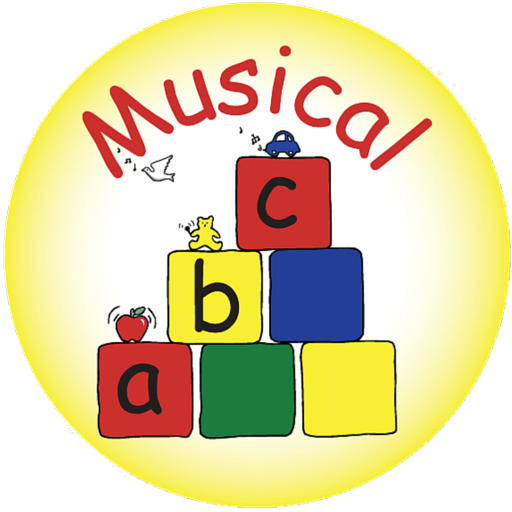Singing + Children =

Singing is such a wonderful experience for all. In the video below Prof Sarah Wilson, an expert in Cognitive Neuroscience and Clinical Neuropsychology, discusses what happens to your brain when you sing.
In summary, she says:
When you think about singing or are singing, large areas of the brain light up!
- Motor Networks
- Auditory or Listening Networks
- Planning and Organisational Networks
- Memory Networks
- Language Networks (if singing words)
- Emotional Networks
Plus it releases dopamine that makes us feel good!
So if we relate this to our work with children. It can help them in so many ways.
Singing + Children =
Acquiring New Vocabulary
Chances are a new song or rhyme that you sing with the children is introducing new vocabulary to them.
Time to Listen
When learning a new song, the children will need to listen to the tune and words. They demonstrate that they have been listening by repeating back what they have heard.
Moving the Whole Body
Many songs and rhymes have an action or movement to go along with it. So singing is a great way to get the children moving.
Working Together.
There is lots of working together when singing songs and rhymes:
- singing at the same time as others
- moving a piece of fabric together when singing Row, row your boat
- holding hands when doing the hokey cokey
Feeling Great.
Singing makes you feel good! (as Prof Wilson mentions) I have seen on many occasions where a child has started a session with me unhappy and within a few minutes of singing they are joining in and smiling.
Exploring Rhyme and Onomatopoeias
So many songs and rhymes have rhyme and onomatopoeias. Develop the children's understanding of both by bringing these to the children's attention:
Rhyme: miss out rhyming words and encouraging the children to fill them in. Rhyme examples: Twinkle Twinkle, Incy Wincy Spider…
Onomatopoeia: play with the different onomatopeias. Say them in low and high voices, or slow and fast. Onomatopoeia examples: Old MacDonald, Horsey Horsey…
Counting Backwards and Forwards.
Many songs and rhymes use counting. This is a great way for children to practice recalling the number names. Also by using props the children can practice their one-to-one correspondence.
Celebrating Events in the Children’s Lives
Most celebrations have songs and rhymes created especially for them. Singing these songs and rhymes help the children celebrate.
Expressing Themselves Creatively
Giving children the opportunity to experiment with songs they know and also playing with sound is a great way for them to develop their creativity.
You can take songs that they already sing and encourage them to play with their voice. For example with Old MacDonald, I encourage the children to play with the different animal sounds: small dog = high pitched squeaky bark vs a big dog = a low deep bark.
Plus there’s so much more...
Need some help?
If you are currently unsure where to start with singing with the under 5s then I can help. Please take a look at Early Years Music Ideas Membership: https://www.musicintheearlyyears.com/early-years-music-ideas-2-to-5
Happy music making!

Categories
- Celebrations (8)
- Composing Music (1)
- Instruments (6)
- Listening to music (6)
- Live Music (1)
- Mathematics (3)
- Mathematics: Number (2)
- Mathematics: Shape, Space and Measure (1)
- Music Area (2)
- Musical Elements (1)
- Music Time (11)
- Nursery Rhymes (3)
- Outdoor Music (1)
- Performing (2)
- PDP (5)
- Props (10)
- Routines (2)
- Schemas (2)
- Seasons (5)
- Senses (1)
- Sensory (3)
- Singing (13)
- The Importance of Music in the Early Years (5)
- Topics and Themes (8)
- Top Tips (1)
- Vocal Play (1)
- Vlog (4)
- About Anne (1)

0 comments
Leave a comment